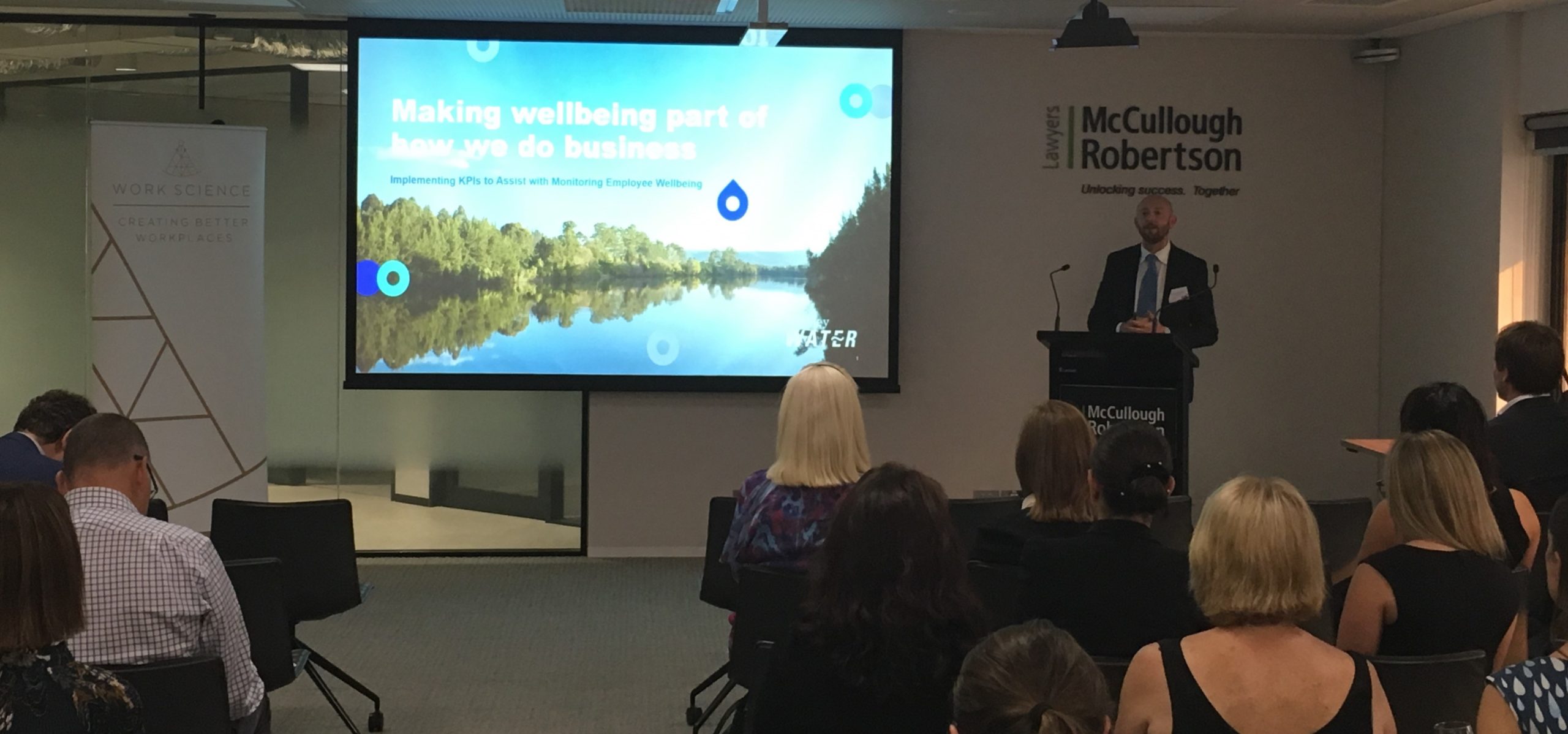AHRI Forum Insights: Wellbeing in the workplace (and now working at home)
Early in December 2019 – yes, the past few months have been, and continue to be, hectic for many reasons, hence this late post – our AHRI Safety and Wellbeing Forum welcomed James Wallace, Head of Safety & Wellbeing at Sydney Water to share research-led insights that led to Sydney Water winning the best WHS campaign at the 2019 Australian Psychological Society Awards.
Given the COVID-19 (coronavirus) pandemic impacting almost all of us, we have paired this post with some practical advice for WHS/HR professionals to help staff maintain their mental health and wellbeing whilst working from home.
Sydney Water supplies and manages water, wastewater, recycled water and some stormwater services to more than five million people in Sydney, Illawarra and the Blue Mountains. These services are essential to the health of the city and its people, the environment and waterways. Caring for the health of more than five million Sydneysiders is very important, but so too is caring about the health and wellbeing of Sydney Water’s 3,200 staff who work around the clock to maintain the supply of this essential resource.
Sydney Water’s journey to understand and address embedded psychosocial safety (PSS) issues achieved dramatic results over a two year-program and pushed it into a new Psychological Safety Climate (PSC) category through systemic integration i.e. making this part of how it does business.
Challenge
People who work within organisations that score high in PSC are less likely to experience burnout and are more engaged at work, along with increases in productivity and reduced psychological injury costs. Sydney Water forecast that a 10% increase in its PSC score would result in:
- 4.5% decrease in bullying;
- 8% increase in resources; and
- 6% increase in engagement
Implementation: Baseline -> Intervention -> Integration
Sydney Water’s Baseline PSC score was determined by conducting an initial sample survey, followed by implementation of a full PSC survey that was conducted in conjunction with Professor Maureen Dollard from the University of South Australia. These surveys provided insights into opportunities and strengths, and guided Sydney Water in the development of the Intervention phase.
The Intervention consisted of three iterative phases, which allowed the building of evidence, trust, and a demonstration of both outcomes and return on investment during each phase:
- 2017: Environment analysed and data gathered to determine an appropriate intervention.
- 2018: Intervention with a goal of improving key metrics and measuring the ROI.
- 2019: Embedded and integrated the program again based on evidence.
The Integration now holistically captures wellbeing at Sydney Water through these measures:
- Reduce risk: Psychological Safety Climate;
- Promote wellbeing: Employee Psychosocial Wellbeing; Subjective Wellbeing and Work-Life Balance; and
- Support those in need: Engagement through burnout manager resources.
Results
- From 2018 to 2019 Sydney Water reduced its Psychological Safety Climate score from “Medium Risk” to “Low Risk”
- All groups that were not undergoing major (organisational) change improved their PSC, which validated Sydney Water’s hypothesis that the increase of job resources is associated with a decrease in burnout and an increase in engagement
- TRIFR reduced by 25%; psychological injury costs reduced by 450%; and EAP utilisation has increased.
Summary
James Wallace summed up the successful program:
- Consider wellbeing as a systemic outcome;
- Ensure integrated approach with KPIs for each area;
- Develop your own evidence base; and
- Start with small things and remember the impacts managers have.
COVID-19 Coronavirus Implications
Scott Paine, AHRI Network Convenor, has assessed and advised clients on their psychosocial wellbeing programs. He shared his insights on how to implement and adapt psychosocial wellbeing activities for staff working from home during the COVID-19 coronavirus pandemic:
- Understand context, relative risk and how to apply this e.g. staff vulnerable to infection should not be delayed/prevented from working from home due to an incomplete workstation assessment, apply the ergonomic basics and proceed
- Consider setting up an informal ‘buddy system’ so colleagues working from home check in on each other’s wellbeing in addition to regular manager contact
- Remind staff to source current information on COVID-19 from reliable sources (not social media): e.g. https://www.health.gov.au/ and follow the advice
- Understand that working from home brings different pressures for different people, whether that is increased home schooling or looking after elderly/vulnerable family or neighbours. More flexibility may be required in capacity, scheduling, communication channels or deadlines
- Encourage top-down leadership reminding staff about work-life balance. Inform staff how to use MS Outlook’s functionality to delay/send emails, so people who work flexibly don’t overwhelm their colleagues with emails outside of normal work hours
- Review your existing organisation cultural activities / workplace norms and adapt those suitable for home working environment – it’s about keeping people connected
- Encourage preparedness whilst staying calm, remind staff of EAP facilities and other external helplines and support services if feeling stressed or anxious
- Remember measurement is key. Review your existing wellbeing measurement frameworks and adapt/improve for the home working environment
If you are interested in more information send me an email at [email protected].

